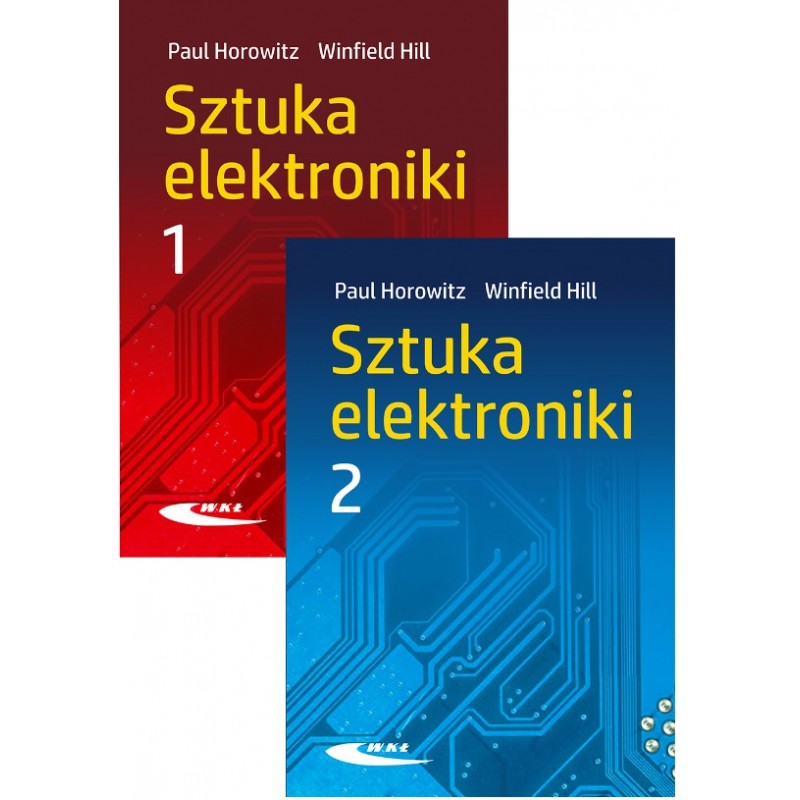- Out-of-Stock

Twenty-five years later, a new, thoroughly revised Polish edition of the highly popular "Electronics Art", widely recognized as the best textbook, and at the same time a vademecum for the design of analog and digital electronic circuits. Previous editions of this book have been translated into eight languages and have reached over a million buyers around the world. The electronics of the authors are taught, showing the methods used in practice by engineers of electronic circuit design. The combination of basic rights, principles based on experience and a non-mathematical approach to the topic makes it easier for readers to understand why and how the system works.
Paul Horowitz is a professor of physics and electronics at Harvard University. There, in 1974, he initiated the laboratory electronics course, from which the "Art of Electronics" emerged. In addition to designing electronic circuits and devices, he conducts research in the field of observational astrophysics, X-ray microscopy and optical interferometry. He is one of the pioneers in the search for intelligent forms of extraterrestrial life (SETI project). He wrote about 200 articles and scientific reports, designed many research and photographic instruments, is a consultant for numerous industrial enterprises and state institutions.
Winfield Hill is a real guru in the field of electronic circuit design. After completing his studies in Chemical Physics at Harvard University and obtaining the title of electrical engineer, he began his engineering career at the Center for Electronic Circuit Design at this university. After years of exploring electronics arcs at Harvard, he founded the company Sea Data Corporation, in which he designed instruments for the needs of physical oceanography. In 1988, he joined the Rowland Institute for Science, which in 2003 merged with Harvard University. As the director of the Electronics Laboratory of this institute, he designed about 500 scientific instruments. He has recently dealt with, among other things, high-voltage circuits operating in the radio frequency range, high-current impulse systems, low-noise amplifiers and pulse generators with MOS transistors.
Manufacturer BTC Korporacja sp. z o. o. Lwowska 5 05-120 Legionowo Poland sprzedaz@kamami.pl 22 767 36 20
Responsible person BTC Korporacja sp. z o. o. Lwowska 5 05-120 Legionowo Poland sprzedaz@kamami.pl 22 767 36 20
No product available!
No product available!
Banana pi BPI-G1 WIFI, BT4.0, Zigbee smart home gateway board
No product available!
The Explore magnetometer allows you to measure the magnetic field in three planes XYZ, equipped with a digital MAG3110 sensor. MOD 64
No product available!
No product available!
Universal ISP programmer for SPLD, CPLD and FPGA circuits (Altera, Atmel, Lattice, Xilinx) and AT89Sxxxx microcontrollers
No product available!
No product available!
AVT kit for self-assembly of a digital thermostat. AVT5441 B
No product available!
High performance full NFC compliant expansion board compatible with Raspberry Pi. EXPLORE-NFC
No product available!
Speaker cable, two-core with a cross section of 1 mm2, black and red, PVC insulation. Price per meter. TASKER TSK53
No product available!
No product available!
No product available!
Ultra miniature WiFi b/g/n module, equipped with UART, SPI, PWM and GPIO interfaces. The ability to work as an access point and in standalone mode. 3.3V power supply.HF-LPT200-1
No product available!
Assembled 4-channel infrared switch controlled by any IR remote control. AVT1815 C
No product available!
No product available!
No product available!

Paul Horowitz, Winfield Hill, WKiŁ Publishing House
